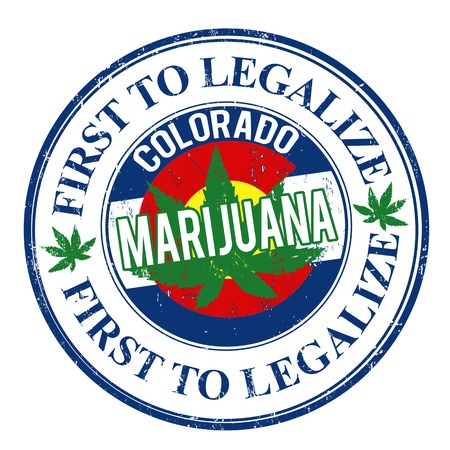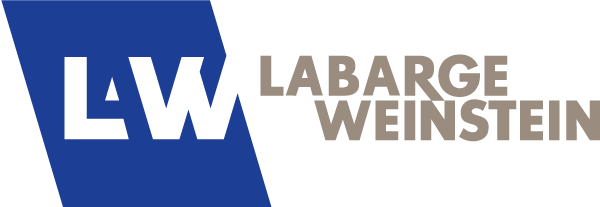Lessons Canada can learn about marijuana regulation from Colorado and Washington
Workers in industries ranging from baking to retail to security are keeping a close eye on the Canadian government’s plans to legalize marijuana for recreational use. After all, legal pot could change the way they work.
In late April this year, Heath Minister Jane Philpott said that new marijuana legislation would be coming by spring of 2017. Details have yet to be released but there’s no doubt that policymakers themselves are keeping a close eye on what’s happened south of the border so far.

In the first six months that marijuana was legal in Colorado, the state saw a total of $30 million in economic output
Colorado and Washington State made history when they became the first two U.S. states to legalize personal possession and retail sale of cannabis. The states developed regulatory frameworks and introduced some common features, like a minimum purchase age of 21 years and a ban on public use.
The trailblazing states set up their systems differently in a few ways, too: Washington bans personal production except for medical use while Colorado allows up to five plants per household to be grown. The path to legal pot for all was borne out of different circumstances, too as Colorado, like Canada, had a comprehensive medical marijuana program in play while Washington had no existing regulated supply.
On January 1, 2014 to much fanfare, retail sales began in Colorado. Just over six months later, on July 8, retail shops in Washington opened their doors for the first time. Since then, Alaska and Oregon have legalized cannabis and about a dozen other states have decriminalized recreational use of marijuana.
The impact on the economy was instant. Between January 1, 2014 and June 20, 2014 – the first six months that marijuana was legal in Colorado, $30 million in total economic output was seen in the state.
As Canada embarks on the path to legalization, there’s plenty to be learned from Colorado and Washington says Debbie Weinstein, co-founding partner at business law firm LaBarge Weinstein LLP. Her experience in Canada’s growing medical marijuana industry includes working with Tweed when it received a federal license to grow and sell medical marijuana, later when the company embarked on a number of mergers, acquisitions and financings, and with Canopy when it got conditional approval to list shares on the TSX.
“We need to try and ensure sufficient regulation that recognizes the existing demand and provides sufficient specificity to not only dry marijuana products but edibles and other forms, as well,” says Weinstein.
“We need to ensure appropriate labeling to avoid harm and be realistic about age appropriateness while taking into account one key desire to eliminate a black market. We need to ensure supply while allowing producers to set their prices based on market demand.”
She adds the tax and public safety components are just as important.
“We need to ensure the sufficient appropriation of taxes which go towards addiction and research,” she says. “And we need to carefully assess how the government will police distribution of home grown products, if they permit it here as they do in Colorado.”
Your neighbourhood distributor
At May’s Marijuana Regulation Conference: Policy and Business Considerations held in Toronto, Weinstein was among a group of speakers including Member of Parliament Bill Blair, the government liaison for the task force that will be tasked with studying and making recommendations on the process for legalization of marijuana in Canada, and Licensed Producers Bruce Linton, CEO Canopy Growth Corporation, John Cervini, Co-Founder and Co-Chari, Aphria and Denis Arsenault, CEO, Organigram.
To the audience of bankers, investors and other stakeholders, the speakers and panelists discussed how the current marijuana industry and infrastructure may evolve. Weinstein predicted that the Ontario government may retain control of recreational marijuana sales through already established entities.
“There will be significant lobbying by big retail organizations such as George Weston at Loblaws and Shoppers Drug Mart, possibly Wal-Mart and Costco, and maybe in time Starbucks, to distribute product,” she says from her Ottawa office.
“On the other hand, each province will constitutionally be entitled to determine the distribution channels,” she adds.
“One would expect provinces like Ontario may want to tax the products with a surcharge as they do with alcohol and gaming, where last year a total of $3 billion in profit was contributed in net taxes to the Ontario coffers. It’s hard to imagine Ontario and other provinces foregoing new taxing opportunities.”
A path to distribution

LaBarge Weinstein’s Debbie Weinstein says distribution of legalized recreational marijuana could take a three-step process and could see the product sold through existing entities like the LCBO
Weinstein says distribution could take form in a three-step process.
“Initially — once the laws allow changes to allow full legalization — I would think that all Canadians would be able to purchase directly from Licensed Producers, that is those currently licensed and regulated by Health Canada. Provinces would then levy a surtax on distribution and Health Canada will continue to increase the number of applicants applying to become licensed producers. To date over 1,200 have applied with less than 40 registered. I see the major second step being the announcement on a province-by-province basis of how they will permit distribution. Some will go with provincially-owned establishments, like the LCBO. Other provinces may allow retail outlets like dispensaries as they do in Colorado to distribute, others may choose a big chain to do so. This will be a province by province decision. Lastly, those with provincial monopolies may also choose to allow distribution through approved establishments such as the LCBO is doing so in limited supermarkets.”
Whether distribution follows this plan or not, Weinstein remains confident that reasonable regulations will remain in place.
“I don’t see a free for all on supply, as I believe Health Canada will require compliance with their rules,” she states. “I also believe there will be criminal record and criminal contact checks, since one of the main objectives behind the legalization is taking the distribution out of the hands of the criminal element.”
Canada may be at the forefront of a greenrush. As Canopy Growth Corporation CEO Bruce Linton said, Canada remains the gold standard for legalizing marijuana on a national level and countries including Germany, Australia and South Africa are looking to learn from the Canadian process.
For more information on marijuana-related legal services or any other service LaBarge Weinstein can provide, please contact us at info@lwlaw.com, visit our website at www.lwlaw.com or follow us on twitter at @LWConnect.
You might also be interested in: How Canada’s marijuana industry is going mainstream



